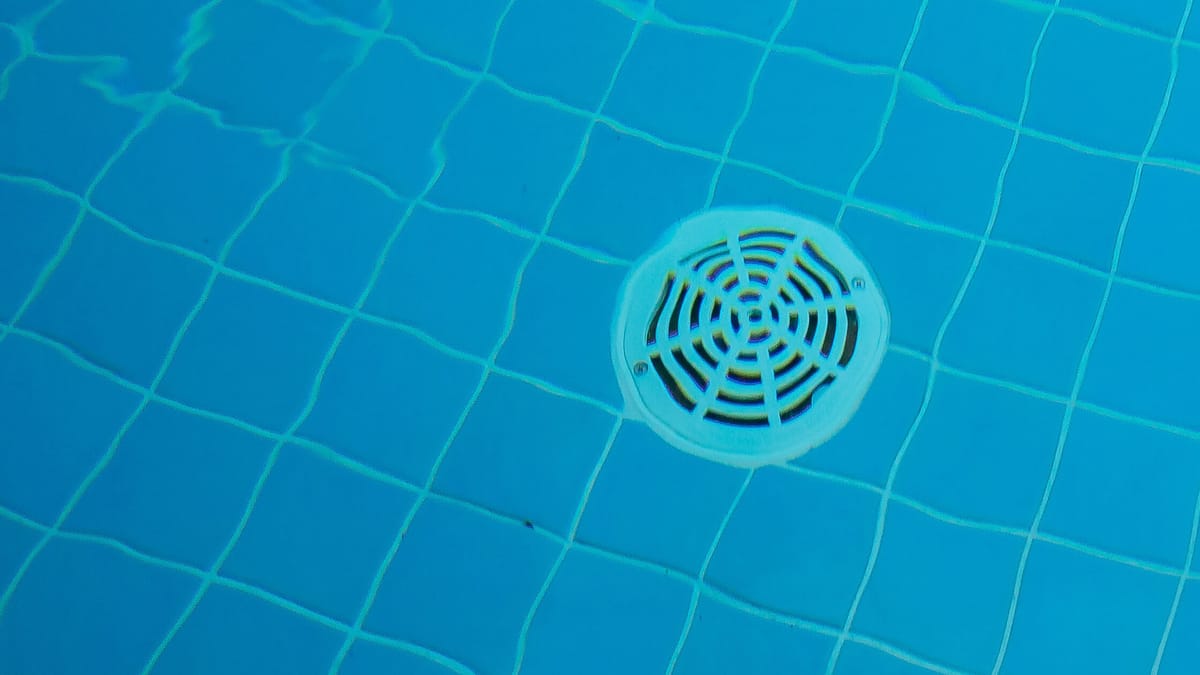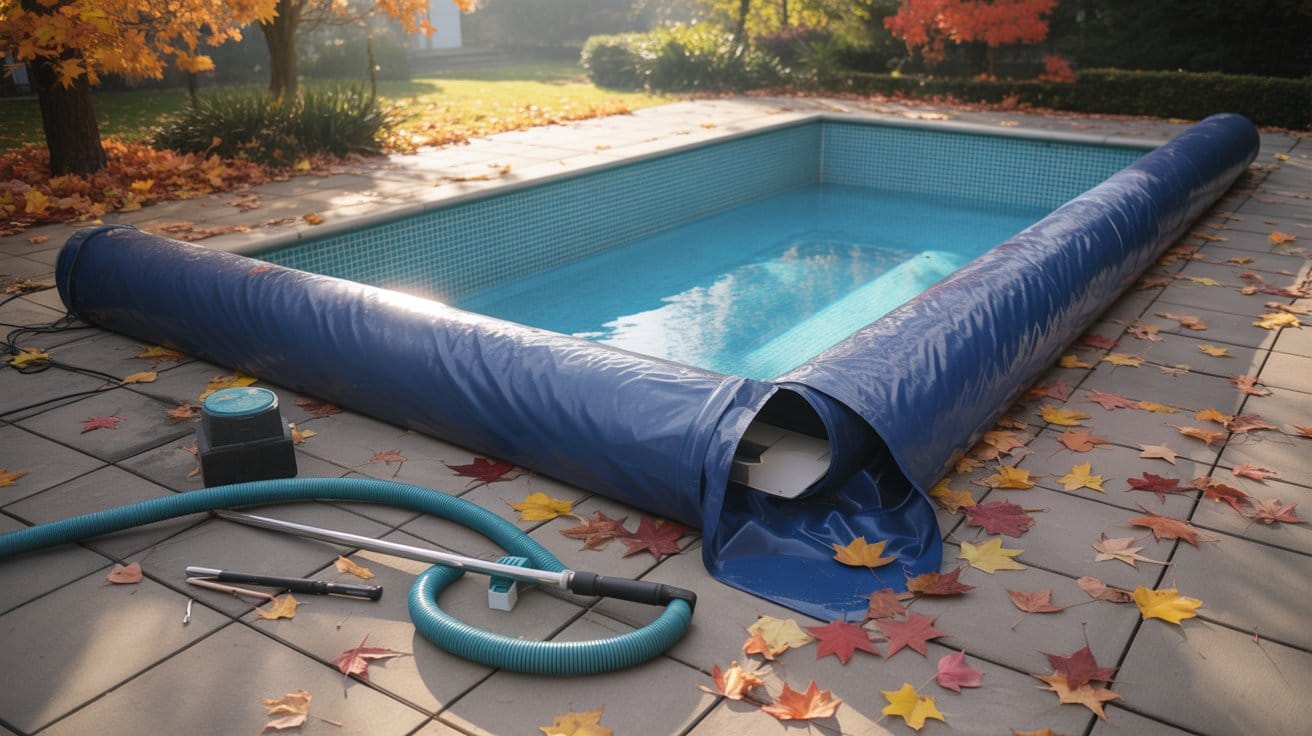How to Winterize an In-Ground Pool

As summer winds down, your focus probably shifts from weekend swims to pool winterization. Even if the weather’s still warm, it’s smart to start thinking ahead. Getting your inground pool ready for winter isn’t just a box to tick; it’s a smart move to protect what you’ve invested in. Without proper in-ground pool maintenance, cold temperatures can wreak havoc on your pool’s structure and equipment, leading to costly spring repairs. But here’s the good news. Winterizing an inground pool doesn’t have to be a headache. With a little planning and a few reliable tools, you can safeguard your pool during the off-season and make next year’s opening a breeze.
Why Winterizing Your In-Ground Pool Is Essential
Skipping winter pool maintenance might seem harmless, but it could cost you big later. When water freezes, it expands, and this expansion can cause pressure to crack pipes, damage surfaces, and break fittings. Repairs from freeze damage can cost anywhere from a few hundred to several thousand dollars. Starting with clean water before closing helps prevent these problems and makes reopening much easier.
There’s more: stagnant water becomes a breeding ground for algae and bacteria, and cleaning that up in the spring is a messy, expensive job. Winterizing also keeps your pump, filter, and heater safe from frost, helping them last longer. Pool equipment protection is just one more reason winter prep is well worth the effort.
Step-by-Step Guide to Winterizing an In-Ground Pool
Staying organized during winterization will save you trouble in the long run. These steps will help protect your pool from the cold and maintain its water quality until spring.
Step 1: Clean the Pool Thoroughly
Start by clearing out all leaves, dirt, and debris from the pool’s floor, walls, and waterline. Scrub surfaces with a brush and thoroughly vacuum everything. A spotless pool is less likely to develop stains or algae over winter. If you’ve got a large pool, a robotic cleaner can make this job quicker and easier.
Step 2: Balance the Pool Water Chemistry
Use a test kit or strips to check your pool’s chemistry. Adjust your levels so that:
- pH is between 7.2 and 7.6
- Alkalinity is 80–120 ppm
- Calcium hardness is 200–400 ppm.
After everything is balanced, add a winter chemical kit to stop bacteria and algae from taking over. You’ll also want to shock the pool one last time to remove leftover contaminants and keep the water clean through winter.
Step 3: Lower the Water Level
Reduce the water level to about 4–6 inches below the skimmer. This keeps water from freezing inside your plumbing. A submersible pump can help with draining. Be careful not to drain too much, as keeping some water in the pool supports the cover and structure.

Step 4: Drain and Store Pool Equipment
Shut off and drain your pump, filter, and heater. Remove the drain plugs to allow all the water to escape. Use a wet/dry vacuum or air compressor to blow out any leftover water from the plumbing lines. Store small gear—like ladders, baskets, and diving boards—somewhere dry to prevent damage.
Step 5: Add Antifreeze (If Needed)
If you live in an area with freezing winters, consider adding non-toxic pool antifreeze to the lines for extra protection. Just ensure it’s propylene glycol-based pool antifreeze, specifically designed for pools. Avoid using automotive antifreeze, as it can be toxic to humans and pets.
Step 6: Install a Winter Pool Cover
Pick a cover that fits your pool and climate.
- Safety covers are anchored in place and keep people and pets safe.
- Solid covers block sunlight and debris, but may need a pump to remove standing water.
- Mesh covers allow water to pass through while keeping leaves and large debris out.
Secure the cover tightly so wind, animals, and dirt stay out. A snug, well-fitted cover helps prevent contamination and damage from snow or storms.

Step 7: Perform Final Checks
Before wrapping up your winter pool maintenance, take a few minutes to double-check everything. Remove any leftover debris from the water and the surrounding area. Confirm that the water level is where it should be and that all pool equipment has been adequately drained. Finally, make sure your pool cover is securely fastened with no gaps, so debris and cold air can’t sneak in during the off-season.
Want an Easier Way to Clean?
Cleaning before closing your pool can be time-consuming, but tools like the Aiper Scuba X1 Pro Max make it easier. This floating pool cleaner skims the surface, removing leaves and debris before they sink. It uses smart sensors to map your pool and even climbs walls for a more thorough clean. It’s handy for both winter prep and regular pool maintenance.
Common Mistakes to Avoid When Winterizing
Even small oversights during pool winterization can cause big problems. One of the most common pool winterization mistakes is skipping a thorough cleaning. Any debris left behind can stain surfaces or encourage algae growth over the winter. Another frequent error is closing the pool with unbalanced water, which can corrode surfaces or cause scaling.

Failing to fully drain equipment like pumps and pipes is also a major risk, as trapped water can freeze and crack the system. Lastly, using the wrong pool cover is one of the most overlooked yet common pool closing errors. A poor-fitting or low-quality cover can let in debris or water or even tear under heavy snow, increasing the chances of pool damage during winter.
Tips for Maintaining Your Pool During Winter
Winter pool maintenance isn’t totally hands-off. Keep an eye on things to avoid trouble:
Start by regularly checking the pool cover. Clear off any leaves, snow, or standing water to prevent damage or sagging. A clean, secure cover does a better job of protecting your pool from debris and freezing temps.
Also, keep an eye on the water level. It should stay just below the skimmer to help prevent frozen water from backing up into the pipes and causing cracks. If rain or snow pushes the level too high, pump some out.
Lastly, inspect for any signs of damage. Look for tears in the cover, shifting tiles, or cracks in the pool’s structure. Catching these early can save you from bigger, more expensive repairs come spring. A few minutes of maintenance here and there can make a big difference.
Final Thoughts
Winterizing your inground pool might seem like a hassle, but it’s a smart way to protect your investment. Following these steps now can save you time, money, and frustration in the spring.
Use tools that lighten your load and make the process easier—like the robotic pool cleaners, which offer hands-free cleaning features perfect for winter prep and year-round maintenance.
With just a bit of effort now, you’ll thank yourself when pool season rolls around again.


